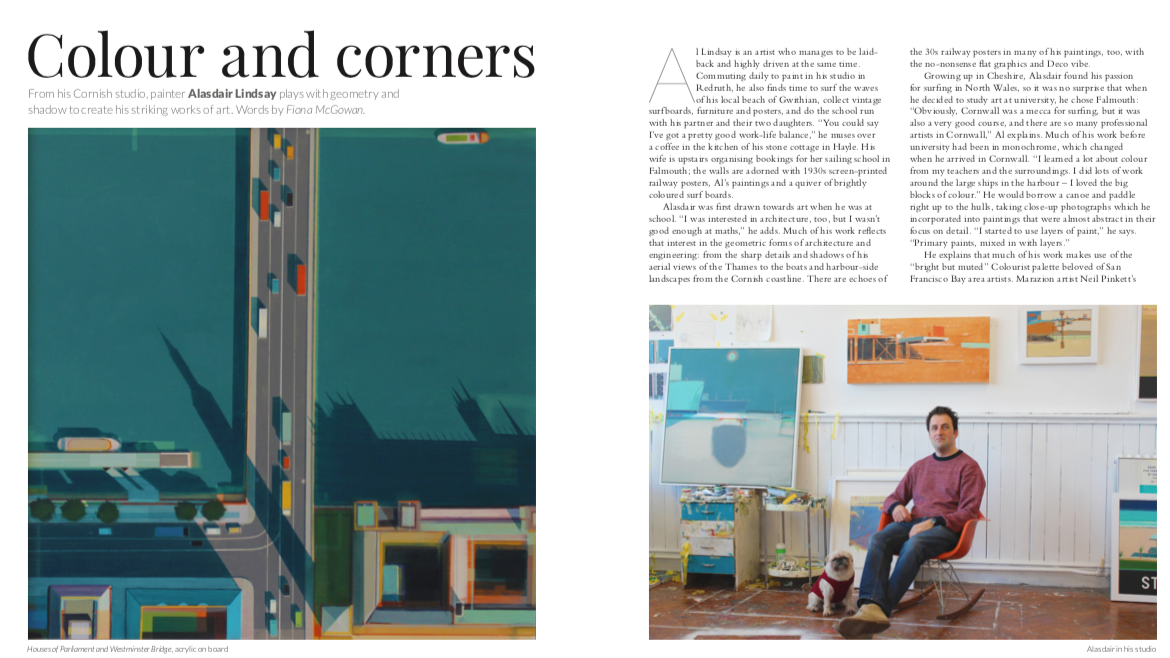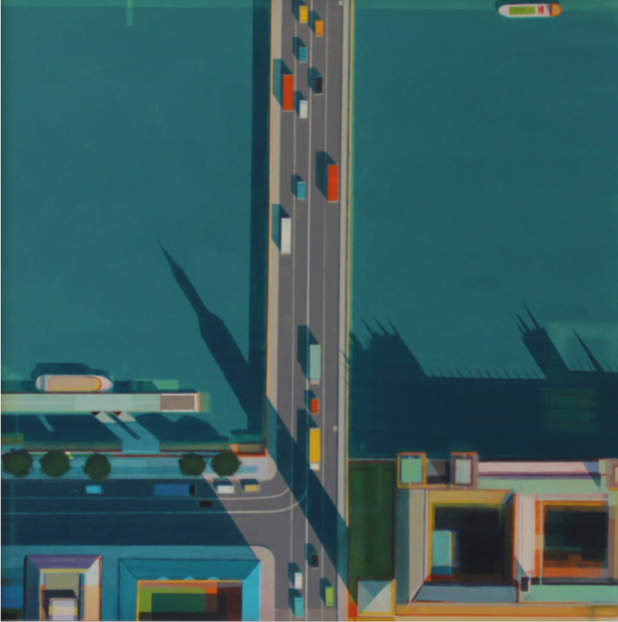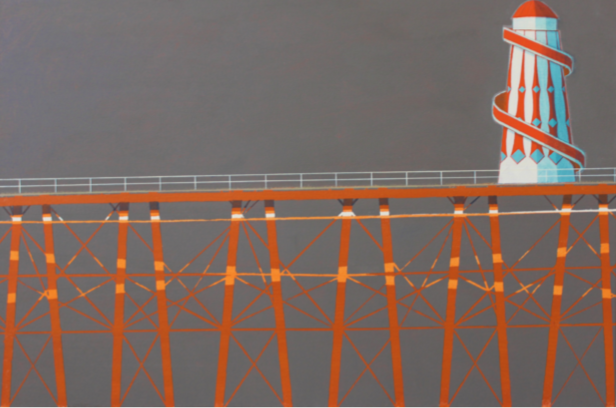Colour and Corners

Al Lindsay is an artist who manages to be laid- back and highly driven at the same time. Commuting daily to paint in his studio in Redruth, he also finds time to surf the waves of his local beach of Gwithian, collect vintage surf boards, furniture and posters, and do the school run with his partner and their two daughters. “You could say I’ve got a pretty good work-life balance,” he muses over a coffee in the kitchen of his stone cottage in Hayle. His wife is upstairs organising bookings for her sailing school in Falmouth; the walls are adorned with 1930s screen-printed railway posters, Al’s paintings and a quiver of brightly coloured surf boards.

Alasdair was first drawn towards art when he was at school. “I was interested in architecture, too, but I wasn’t good enough at maths,” he adds. Much of his work reflects that interest in the geometric forms of architecture and engineering: from the sharp details and shadows of his aerial views of the Thames to the boats and harbour-side landscapes from the Cornish coastline. There are echoes of the 30s railway posters in many of his paintings, too, with the no-nonsense flat graphics and Deco vibe.

Growing up in Cheshire, Alasdair found his passion for surfing in North Wales, so it was no surprise that when he decided to study art at university, he chose Falmouth: “Obviously, Cornwall was a mecca for surfing, but it was also a very good course, and there are so many professional artists in Cornwall,” Al explains. Much of his work before university had been in monochrome, which changed
when he arrived in Cornwall. “I learned a lot about colour from my teachers and the surroundings. I did lots of work around the large ships in the harbour – I loved the big blocks of colour.” He would borrow a canoe and paddle right up to the hulls, taking close-up photographs which he incorporated into paintings that were almost abstract in their focus on detail. “I started to use layers of paint,” he says. “Primary paints, mixed in with layers.”
He explains that much of his work makes use of the “bright but muted” Colourist palette beloved of San Francisco Bay area artists. Marazion artist Neil Pinkett’s aerial views were part of the inspiration for his London canvases. But he wanted to do views looking straight down, with late afternoon shadows providing the dimension and context to the flat, bright colours of boats and bridges on the Thames. “Using the ‘plan view’, I wanted to get more abstraction in those blocks of colour. And it was refreshing not to worry about perspective, leaving it to the shadows to describe what you are seeing.”

In his paintings featuring architecture, he is drawn to Modernist, mid-century buildings. “I try to find them in Cornwall – and if I can’t find them, I invent them,” he says with a smile, clearly enjoying being able break free of factual constraints. There is a Hockney-esque quality about the colour and shadows of his architectural works, and even a touch of Hopper. “I suppose so,” Al responds. “There’s certainly something about the way the strong shadows charge the atmosphere.”
Al sits back in his Eames lounge chair and looks out of the bay window, talking about his love of 60s music. “I have a record player at the studio, and lots of vintage vinyl. I love the sleeve designs back then: the blocks of colour and cropping of images.” If there was a time machine, it is quite clear that Al’s stylistic and creative home would be in the 50s and 60s. That he injects this into the 21st-century Cornish art scene makes a refreshing impact.

